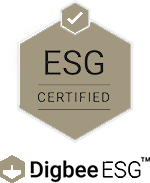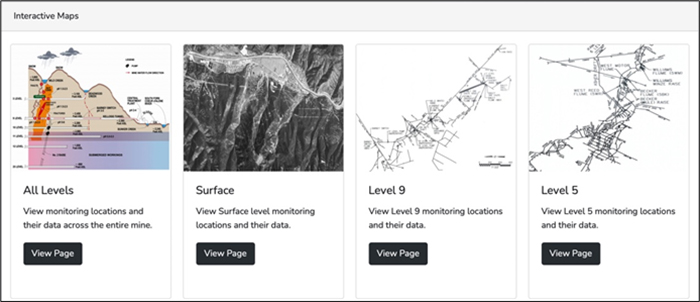News Releases
Bunker Hill Launches Its Web-Based Water Discharge Monitoring System in Support of Its Rapid Restart Program
HIGHLIGHTS
- In support of its rapid restart program, Bunker Hill continues to optimize its water management solutions
- The new pre-discharge treatment system is already having a significant effect, with acidity and metal content reduced substantially
- To ensure transparency of this critical environmental aspect the Company has installed a water discharge monitoring system which uploads data onto its website every 5 minutes
TORONTO, March 15, 2021 (GLOBE NEWSWIRE) -- Bunker Hill Mining Corporation (the “ Company ”) (CSE: BNKR) announces the launch of its water quality tracking platform, which uploads data onto its website every 5 minutes. In line with its commitment to transparency and partnership, this gives public access to both real-time data on the quality of mine water being discharged from the Kellogg Tunnel and an interactive database to allow detailed historical analysis by all stakeholders.
Bradley Barnett, Vice President of Sustainability stated: “There can be no lasting trust without transparency. Giving our local community and key stakeholders, such as the US EPA, unfiltered access to our water discharge and management data are key to building an effective partnership with those involved in ensuring the highest possible standards of environmental management.”
THE WATER MANAGEMENT PARTNERSHIP: “TEAMWORK IN ACTION”
The Bunker Hill mine is located within the Bunker Hill Mining and Metallurgical Complex Superfund site, established in 1983 by the US EPA to ensure the environmental cleanup and restoration work in areas contaminated by mining waste in the Coeur D’Alene River Watershed, Coeur D’Alene Lake, and the upper reaches of the Spokane River.
Water that flows from the Bunker Hill Mine is treated by the US EPA-run Central Treatment Plant (CTP), before it is discharged into the South Fork of the Coeur D’Alene River. This reduces the concentration of metals and acidity at or below established discharge limits.
Working in partnership with the US EPA, the State of Idaho Department of Environmental Quality (IDEQ), MineWater LLC, Klepfer Mining Services and Stantec Consulting International LLC, the Company has spent a year analyzing the mine’s water system to determine and implement new ways to improve the quality of the water before it needs to be treated at the CTP. This will result in an overall reduction in the cost of water treatment. Continued research, improvement and optimization of these efforts will further improve the robustness of the combined solution for the benefit of all stakeholders.
Concurrent with this, the Company is a participating stakeholder in the Basin Environmental Improvement Project Commission (BEIPC), a partnership established to implement, direct and/or coordinate environmental remediation, natural resource restoration, and related measures to address water quality and heavy metal contamination.
To further ensure its efforts have the optimal impact, the Company is now a public participant in the National Academy of Sciences study into “The Future of Water Quality in the Coeur d’Alene Lake”. This is alongside the US EPA, IDEQ, Kootenai County, and the Coeur D’Alene Tribe.
REAL TIME WATER QUALITY TRACKING PLATFORM
The Water Quality Tracking Platform is found within the ESG section of the website. It consists of two parts:
- A data logger that uploads and reports six water quality metrics in real-time from the Kellogg Tunnel
- An interactive database that uses monthly water quality testing results from a wide range of locations in and around Bunker Hill Mine
The Company’s In-Situ data logger is stationed at the Kellogg Tunnel, which is the mine’s single point of discharge. It measures and reports pH, water flow rate, conductivity, turbidity, dissolved solids and temperature of the mine’s effluent. The results are uploaded every five minutes to the company’s website. To assist with analysis, this facility also allows users to export data over a time period they choose if they wish to conduct any independent analysis. As an example, the pH for March 2021 is 5.72 vs 3.17 in Feb 2020. The dashboard is shown below:
The interactive database allows users to customize analysis of much more detailed water quality testing. Bunker Hill collects water samples from 30+ locations on a monthly basis. The samples are sent to nearby Silver Valley Analytical laboratory for wide spectrum testing. The system produces time series trends of key metrics such as concentrations of dissolved zinc, lead and cadmium, pH, water flow and metal loads for zinc, lead and cadmium. These analyses were selected for the launch of the system because they are the main “contaminants of concern” in the Silver Valley’s water system. Each section also allows user to study average values for the full range of analytes begin tested. The user is allowed to adjust the time period over which values are calculated along with the different locations the user wishes to study. Plans exist for additional analyses to be added to the database as additional data is collected and meaningful trends and relationships are identified.
The system currently allows users to analyze the Bunker Water system using plan view maps of its most significant zones as focal points. The 5 level of the mine was selected as a focal point because a significant amount of the acid production in the mine occurs in and around the east side of the mine on that level. The database allows stakeholders to track environmental performance on a location-by-location basis in this important area. The 9 level is important because it is the point confluence for the many different water sources within in the mine that contribute to the mine’s effluent being discharged from the Kellogg Tunnel on this level. The system allows users to understand the spatial relationships between relatively poor-quality water sources and relatively good quality water sources and it also helps users to compare these different locations against each other.
The Company’s monthly data collection started in September 2020. The system also incorporates limited data that was collected by the US EPA in 1998-9 in accordance with their own environmental study protocols. While Bunker Hill has developed its own Quality Assurance Project Plan to ensure data integrity, the protocols and procedures used by Bunker Hill’s water management team may differ from those used by the US EPA its contractors. Both data sets are included to give users a sense of where, in what ways and how much the water system has changed over the past twenty years. Bunker Hill has included many of the US EPA’s monitoring locations for this purpose.
With user feedback, additional features will be added to both of the existing features of the platform. In addition to water quality monitoring and reporting, Bunker Hill plans to develop a range of environmental performance tracking systems in the near future as a component of its plans to restart Bunker Hill Mine.
The U.S. Geological Survey (USGS) has conducted surface water stream gaging and water-quality monitoring in the Coeur d’Alene watershed since 1990 and as part of EPA’s Basin Environmental Monitoring Program since 2004. The most recent USGS analysis of long-term water-quality and streamflow data, and the impact of EPA remedial actions on metals in surface water, was released in 2020: https://pubs.er.usgs.gov/publication/sir20205096 .
Qualified Person
Mr. Scott E. Wilson, CPG, President of Resource Development Associates Inc. and a consultant to the Company, is an Independent “Qualified Person” as defined by NI 43-101 and is acting at the Qualified Person for the Company. He has reviewed and approved the technical information summarized in this news release.
About Bunker Hill Mining Corp.
Bunker Hill Mining Corp. has an option to acquire 100% of all saleable assets at the Bunker Hill Mine. Information about the Company is available on its website, www.bunkerhillmining.com, or within the SEDAR and EDGAR databases.
For additional information contact:
Sam Ash, President and Chief Executive Officer, +1 208 786 6999, sa@bunkerhillmining.com
Cautionary Statements
Certain statements in this news release are forward-looking and involve a number of risks and uncertainties. Such forward-looking statements are within the meaning of that term in Section 27A of the Securities Act of 1933, as amended, and Section 21E of the Securities Exchange Act of 1934, as amended, as well as within the meaning of the phrase ‘forward-looking information’ in the Canadian Securities Administrators’ National Instrument 51-102 – Continuous Disclosure Obligations. Forward-looking statements are not comprised of historical facts. Forward-looking statements include estimates and statements that describe the Company’s future plans, objectives or goals, including words to the effect that the Company or management expects a stated condition or result to occur. Forward-looking statements may be identified by such terms as “believes”, “anticipates”, “expects”, “estimates”, “may”, “could”, “would”, “will”, or “plan”. Since forward-looking statements are based on assumptions and address future events and conditions, by their very nature they involve inherent risks and uncertainties. Although these statements are based on information currently available to the Company, the Company provides no assurance that actual results will meet management’s expectations. Risks, uncertainties and other factors involved with forward-looking information could cause actual events, results, performance, prospects and opportunities to differ materially from those expressed or implied by such forward-looking information. Forward looking information in this news release includes, but is not limited to, the Company’s intentions regarding its objectives, goals or future plans and statements. Factors that could cause actual results to differ materially from such forward-looking information include, but are not limited to: the ability to predict and counteract the effects of COVID-19 on the business of the Company, including but not limited to the effects of COVID-19 on the price of commodities, capital market conditions, restriction on labour and international travel and supply chains; failure to identify mineral resources; failure to convert estimated mineral resources to reserves; the inability to complete a feasibility study which recommends a production decision; the preliminary nature of metallurgical test results; delays in obtaining or failures to obtain required governmental, environmental or other project approvals; political risks; changes in equity markets; uncertainties relating to the availability and costs of financing needed in the future; the inability of the Company to budget and manage its liquidity in light of the failure to obtain additional financing, including the ability of the Company to complete the payments pursuant to the terms of the agreement to acquire the Bunker Hill Mine Complex; inflation; changes in exchange rates; fluctuations in commodity prices; delays in the development of projects; capital, operating and reclamation costs varying significantly from estimates and the other risks involved in the mineral exploration and development industry; and those risks set out in the Company’s public documents filed on SEDAR. Although the Company believes that the assumptions and factors used in preparing the forward-looking information in this news release are reasonable, undue reliance should not be placed on such information, which only applies as of the date of this news release, and no assurance can be given that such events will occur in the disclosed time frames or at all. The Company disclaims any intention or obligation to update or revise any forward-looking information, whether as a result of new information, future events or otherwise, other than as required by law. No stock exchange, securities commission or other regulatory authority has approved or disapproved the information contained herein.



